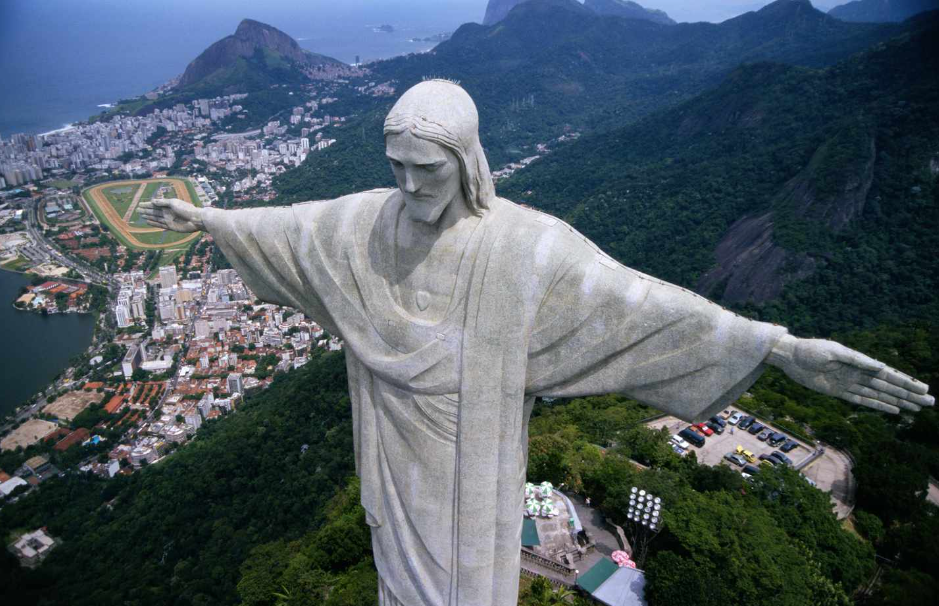The Christ the Redeemer statue is the Brazil National Monument and one of the most visited tourist destinations in the country located in Rio de Janeiro. This article will provide an overview of the Christ the Redeemer statue and its significance as a national monument.
Overview of the Brazil National Monument
The Christ the Redeemer statue is a 30-meter tall statue of Jesus Christ with arms outstretched, standing atop the Corcovado mountain in Rio de Janeiro, Brazil. The statue is made of reinforced concrete and soapstone and was designed by Brazilian engineer Heitor da Silva Costa. It was constructed between 1922 and 1931 and is considered one of the largest Art Deco statues in the world.
Historical Significance of the Brazil National Monument
The idea for the Christ the Redeemer statue was first proposed in the mid-19th century, but it wasn't until the early 20th century that plans were put in place for its construction. The statue was built to commemorate the 100th anniversary of Brazil's independence from Portugal and to promote Brazil's religious heritage. The statue is also considered a symbol of peace, as the outstretched arms of Jesus represent his embrace of all humanity.
Cultural Significance
The Christ the Redeemer statue has become a symbol of Brazil's cultural identity and is recognized around the world as an iconic landmark. The statue has been featured in countless films, TV shows, and commercials, and is a popular destination for tourists from around the world. The statue has also been used as a symbol of hope and inspiration during times of crisis, such as during the COVID-19 pandemic, when images of the statue were used to promote social distancing and other public health measures.
Design and Construction
The Christ the Redeemer statue was designed by Brazilian engineer Heitor da Silva Costa, with assistance from French sculptor Paul Landowski. The statue took nine years to build and required over 6 million pounds of cement and concrete. The soapstone used for the outer layer of the statue was quarried in the state of Minas Gerais and transported to Rio de Janeiro by train. The construction of the statue was a major engineering feat, as it required the installation of a cogwheel railway to transport workers and materials up the steep slopes of the Corcovado mountain.
Restoration and Maintenance
Over the years, the Christ the Redeemer statue has required periodic maintenance and restoration work to address the effects of weathering and aging. In 2010, a major restoration project was undertaken to repair cracks and other damage to the statue's surface. The project involved the installation of new lighting and a new elevator system to transport visitors to the top of the statue. The statue is now equipped with a state-of-the-art monitoring system that tracks changes in temperature, humidity, and other environmental factors to ensure the statue remains in good condition.
Visiting the Christ the Redeemer Statue
Visiting the Christ the Redeemer statue is a popular activity for tourists visiting Rio de Janeiro. The statue is accessible by a cogwheel railway that runs from the foot of the Corcovado mountain to the summit, where the statue is located. Visitors can also hike to the summit, although the climb can be challenging and is not recommended for inexperienced hikers. Once at the top, visitors can enjoy panoramic views of the city and take photos with the statue.
FAQs
- What is the height of the Christ the Redeemer statue?
The Christ the Redeemer statue is 30 meters (98 feet) tall.
- When was the Christ the Redeemer statue built?
The statue was built between 1922 and 1931 to commemorate Brazil's independence from Portugal and promote the country's religious heritage.
- What materials were used to construct the Christ the Redeemer statue?
The statue is made of reinforced concrete and soapstone.
- How do visitors reach the Christ the Redeemer statue?
Visitors can reach the statue by taking a cogwheel railway or hiking to the summit of the Corcovado mountain.
- What is the significance of the outstretched arms of the statue?
The outstretched arms represent Jesus' embrace of all humanity and are a symbol of peace.
In conclusion, the Christ the Redeemer statue is a remarkable engineering and artistic achievement that has become an iconic symbol of Brazil. Its significance as a national monument extends beyond its cultural and historical importance to Brazil's identity as a nation. For visitors, it offers breathtaking views and a powerful sense of inspiration and wonder.
References
- "Christ the Redeemer" by Brazil Travel Guide: https://www.braziltravelguide.com/rio-de-janeiro/christ-the-redeemer/
- "Christ the Redeemer: An Iconic Statue of Jesus" by National Geographic: https://www.nationalgeographic.com/travel/destinations/south-america/brazil/christ-redeemer-rio-de-janeiro-brazil-iconic-statue-of-jesus/
- "Christ the Redeemer: Fascinating Facts About Brazil's Famous Landmark" by The Culture Trip: https://theculturetrip.com/south-america/brazil/articles/christ-the-redeemer-fascinating-facts-about-brazils-famous-landmark/
